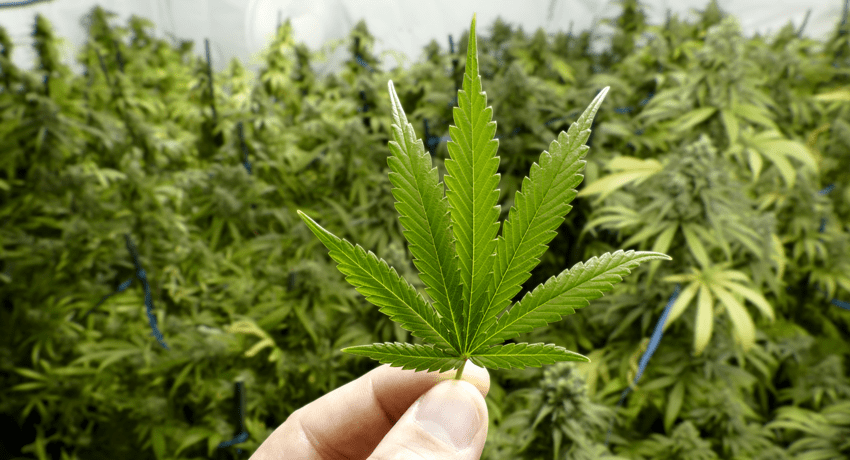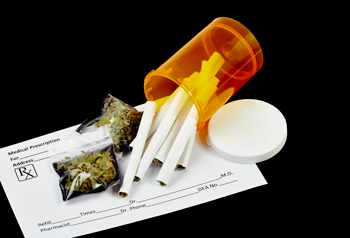Legalizing pot may confuse teens into thinking it’s safe
States that allow adults to use marijuana may send a risky message to teens, new data indicate

A growing number of teens think marijuana is no big deal, a new study finds. And that may encourage many to experiment with its use.
OpenRangeStock/istockphoto
Share this:
- Share via email (Opens in new window) Email
- Click to share on Facebook (Opens in new window) Facebook
- Click to share on X (Opens in new window) X
- Click to share on Pinterest (Opens in new window) Pinterest
- Click to share on Reddit (Opens in new window) Reddit
- Share to Google Classroom (Opens in new window) Google Classroom
- Click to print (Opens in new window) Print
By Lela Nargi
A high school English teacher in New York — let’s call her Ms. McDonald — has lately noticed more kids coming to class high on marijuana. She can tell. When they’re high, they’re spacey and unfocused, she says. Plus, she adds, “They talk pretty openly about it. It’s considered very normal.”
Normal? What gives teens that idea, asks Magdalena Cerdá. She works at the University of California, Davis School of Medicine, in Sacramento. As an epidemiologist, she tracks down causes of disease or unhealthy trends.
Marijuana use by kids certainly is not healthy, notes Stephen Wallace. He directs the Center for Adolescent Research and Education in Palm Beach Gardens, Fla. Some teens who regularly use pot develop mental-health problems, Wallace notes. These could include anxiety, depression and even psychosis (Sy-KOH-sis). That last condition is where people can’t tell what is real and what they are imagining.
Other problems linked to using pot include making working memory worse, he points out. Working memory is a brain function we need to understand language. It also helps us remember — for example — a math formula long enough to use it to do homework. Bad working memory can therefore lead to bad grades.
Yet if adolescents think pot is “no big deal,” Cerda wondered, might they become more likely to use it? In search of answers, she started reading research studies. They showed that compared to 25 years ago, fewer adolescents now think marijuana use is risky.
Cerdá knew that some states were making marijuana legal. Nineteen states allow adults to buy pot with a doctor’s prescription. Seven states have made non-medical use legal. That means adults can buy it as they would alcohol.
These laws only apply to adults. Buying and using pot is still illegal for minors. But Cerdá wondered how the new laws might be affecting teen attitudes and use of the drug. To find out, her team started its own study.
Based on a quarter-million U.S. teens
Her team used a survey called Monitoring the Future. Researchers collect data for it every year. They ask eighth, tenth and twelfth graders in U.S. schools about their use of, and attitudes about, alcohol and other drugs. Cerdá’s team focused on data from 253,902 students in the states of Washington and Colorado. Both of these states legalized non-medical use of marijuana in 2012. The team looked at the years 2010 through 2015. This let them concentrate on use and attitudes before and after pot became legal.
First, Washington: After 2012, a sense that this drug was risky went down among eighth and tenth graders. It fell by an average of 15 percent. In states where pot stayed illegal, the sense that it was risky went down by an average of only 6 percent among students in those grades. After the Washington law changed, the number of teens who used pot in the month before they had been surveyed increased 2 percent among eighth graders. It increased 4.1 percent among tenth graders.
This pattern bucked a trend seen in states where the drug stayed illegal. There, pot use dropped by 1.3 percent among eighth graders. It dropped by almost 1 percent among tenth graders.
There was no change in the drug’s use or attitudes among high-school seniors in Washington. The researchers have a theory about why. Maybe these older teens had already made up their minds about pot.
Cerdá’s team also saw no real change in attitudes on pot among students of any age in Colorado. This could have to do with how Colorado legalized the use of medical marijuana in 2000, Cerdá says. Kids saw posters and TV ads about the issue. This may have given them the idea that pot was normal and beneficial. By the time the drug’s non-medical use was legalized, the kids’ attitudes may already have been shaped by its legal medical use.
The results of Cerdá’s study appear in the February JAMA Pediatrics.
What’s good for adults may not be good for teens
Cerdá hopes states will try not to make pot seem glamorous. “Research shows that non-attractive labels around tobacco were important” to keep kids off cigarettes, she says. “Maybe some of these same lessons should be applied to marijuana.”
Christopher Hammond agrees. He’s a child and adolescent psychiatrist at the Johns Hopkins University School of Medicine in Baltimore, Md. “When Colorado legalized medical marijuana use, they allowed for advertising,” he notes. He now thinks that may have made teens open to trying it. That could have led to them use pot regularly.

And what’s disturbing, he notes: “We don’t have any information on who can experiment with marijuana and not go on to develop problems.”
Hammond, too, worries about kids using pot. Some marijuana use may have positive effects for adults, he says. But he adds, “When you start to use it regularly as a teenager, it has harmful consequences.” Several studies have shown brain changes in regular teen users of pot. These include lower brain volume in regions used to process information. The consequences could be long lasting. “Your brain doesn’t stop developing when you’re 18,” says Hammond. It matures into your late 20s. Some of those still-maturing parts “are the regions we know are more sensitive to marijuana exposure,” Hammond says.
For these and a host of other reasons, Wallace would like fewer teens to think pot is safe. He’d also like to see a drop in the number of them who use it.
Early pot use can affect a person’s ability to think and focus. It can make it hard to plan and multitask. It can harm short-term memory and lower IQ in regular teen users, says Hammond. Plus, he adds, “It’s unclear if that drop in IQ ever catches back up if you stop using.”
The drug also can be addictive. Leslie Walker-Harding heads pediatrics at Penn State Children’s Hospital in Hershey, Pa. Four in 10 people who use pot as kids develop a drug-abuse problem, she notes. That rate is four times higher than is seen in adult users.
For all of these reasons, when people ask Wallace, “What level of use is acceptable among young people?” he answers “zero!”
More states are set to legalize pot. This has experts wondering how to change the way teens think about it. Getting rid of attractive ads might help. And for middle- and high school students, Cerdá adds, “States should maybe think about investing in evidence-based substance-abuse programs.” She thinks that might help protect vulnerable kids from the risks of drug use.
When it comes to pot, her message is simple: “Just because it’s legal doesn’t mean it’s good for you.”







